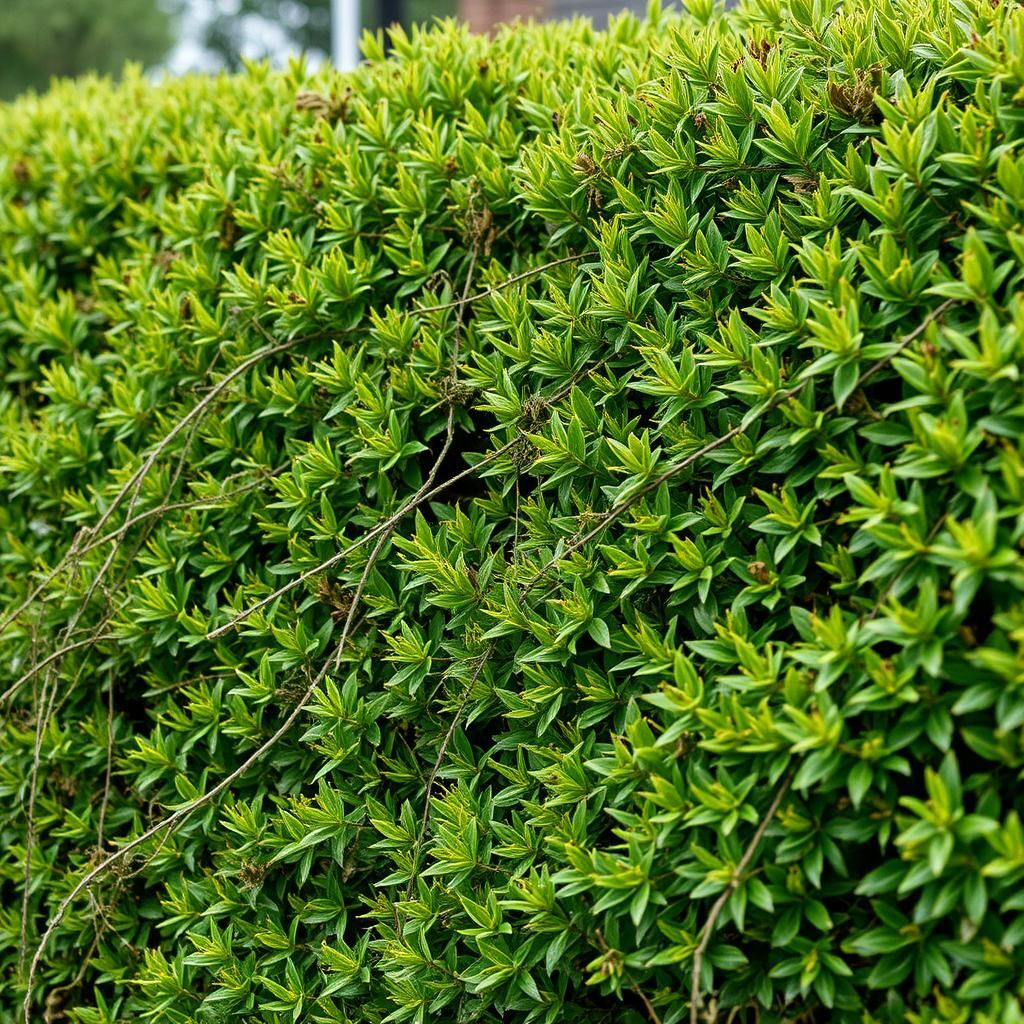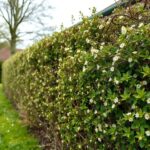Why is my hedge suddenly dying? Top Reasons and Solutions Explained

Hedges are a popular choice for landscaping, providing privacy, structure, and aesthetic appeal to gardens. However, it can be distressing to notice that your once-thriving hedge is suddenly dying. Understanding the underlying causes of this decline is crucial for any gardener. In this article, we will explore the top reasons your hedge may be struggling, ranging from environmental factors to pest infestations. By identifying these issues early on, you can implement effective solutions to revive your hedge and restore its beauty. Join us as we delve into the common problems and remedies to bring your hedge back to life.
Why Is My Hedge Suddenly Dying?
If your hedge is suddenly dying, several factors could be at play, including environmental stress, disease, pest infestations, or improper care. Changes in the weather, such as extreme temperatures or drought, can weaken the plant, making it more susceptible to disease and pests. Additionally, overwatering or poor soil drainage may cause root rot, while a lack of nutrients can lead to poor health. Conducting a thorough assessment can help identify the underlying causes and guide appropriate remedies to revive your hedge.
Environmental Stressors
Environmental stressors such as drought, extreme cold, or excessive heat can significantly impact the health of your hedge. When the plant does not receive adequate water, especially in times of drought, it may show signs of wilting or browning leaves. Conversely, frost or sudden temperature fluctuations can lead to damage to tender foliage. Monitoring the weather conditions and providing necessary care during these extreme conditions can help mitigate the impact on your hedge.
Diseases Affecting Hedges
Various diseases can afflict hedges, causing sudden decline. Fungal infections like powdery mildew or root rot can infiltrate the plant, leading to wilting, yellowing, or falling leaves. Bacterial diseases can also cause leaf spots or cankers. Regular inspection for symptoms and maintaining good air circulation can help prevent or manage these diseases. If diagnosed early, certain treatments or removals of infected portions can save the hedge.
Pest Infestation
Pests such as aphids, spider mites, or scale insects can wreak havoc on a hedge, leading to its sudden decline. These pests feed on the plant's sap, weakening it over time and causing symptoms like curling leaves or stunted growth. Regular monitoring and use of appropriate pesticides or natural remedies can help control these infestations and preserve the health of your hedge.
Improper Watering Practices
Improper watering can be detrimental to hedge health. Overwatering can lead to poor drainage and root rot, while underwatering can cause the hedge to become stress-stricken and die back. It is crucial to establish a watering routine that meets the plants' needs based on the season and soil type. Using mulch can also help retain moisture and regulate the temperature of the soil.
Soil Nutrient Deficiencies
Soil nutrient deficiencies can lead to the decline of your hedge. Essential nutrients like nitrogen, phosphorus, and potassium are vital for healthy growth. If soil tests reveal inadequate nutrient levels, consider adding fertilizers or amendments to restore balance. Regularly testing the soil pH and nutrient content can prevent deficiencies and support the overall vitality of your hedge.
| Factor | Description |
|---|---|
| Environmental Stress | Conditions like drought or extreme temperatures affecting plant health. |
| Diseases | Fungal and bacterial infections leading to wilting or discolored foliage. |
| Pest Infestation | Insects feeding on plants, causing physical damage and weakening the hedge. |
| Watering Practices | Over or under-watering leading to root problems or stress in the plant. |
| Nutrient Deficiency | Insufficient nutrients in the soil affecting growth and health of the hedge. |
How do you revive a dying hedge?

To revive a dying hedge, several strategies can be implemented to restore its health and vitality. It is essential to assess the underlying issues affecting the hedge, such as pests, diseases, nutrient deficiencies, or environmental conditions. Here are some detailed steps you can take to revive a dying hedge.
Assess the Condition of the Hedge
The first step in reviving a dying hedge is to carefully evaluate its current state. Look for signs of stress or decay, such as yellowing leaves, stunted growth, or bare patches. Identifying the symptoms will help you determine the possible causes.
- Examine the leaves for discoloration or unusual spots.
- Check the branches for brittleness or dieback.
- Inspect the roots for signs of rot or pests.
Improve Soil Quality
The health of your hedge largely depends on the quality of the soil in which it grows. Poor soil can hinder the hedge's growth and lead to decline. Amending the soil can provide essential nutrients and improve drainage.
- Add organic matter, such as compost, to enrich the soil.
- Perform a soil test to determine pH levels and nutrient deficiencies.
- Ensure proper drainage to prevent root rot.
Water Properly
Watering is crucial for a hedge's recovery. Overwatering and underwatering can both lead to stress. It’s important to find a balance and water the hedge according to its specific requirements.
- Check soil moisture regularly to avoid water stress.
- Deep water the hedge to promote deep root growth.
- Consider using mulch to retain moisture and regulate soil temperature.
Prune Dead or Diseased Branches
Pruning is an important practice that helps revitalize a hedge. Removing dead or diseased branches can encourage new growth and improve airflow.
See also:
- Use sharp, clean tools to prevent further damage.
- Cut back to healthy buds or branches to promote regrowth.
- Dispose of clippings to prevent the spread of disease.
Fertilize Appropriately
The application of the right type of fertilizer can significantly improve the health of a dying hedge. Regular fertilization can provide the necessary nutrients that the hedge might be lacking.
- Choose a balanced fertilizer suitable for hedges.
- Follow package instructions regarding application rates and frequency.
- Consider slow-release options for a sustained nutrient supply.
How do you treat dying hedges?

To effectively treat dying hedges, it's important to follow a series of steps that can help revive the health of the plants or, if necessary, guide you to the appropriate replacement. Factors such as soil quality, watering practices, and pest control play essential roles in the overall condition of the hedges. Here’s how to approach the treatment of dying hedges:
Assess the Health of the Hedges
To begin treating dying hedges, a thorough assessment is critical. Look for signs of disease, nutrient deficiencies, or environmental stress.
- Examine leaves for discoloration: Yellowing may indicate nutrient deficiencies or overwatering.
- Check for pests: Look for worms, aphids, or other insects that may be damaging the foliage.
- Inspect for diseases: Signs like wilting or fungal growth can signify illness in the plant.
Improve Soil Quality
The quality of the soil in which your hedges are planted can significantly impact their health. Healthy soil promotes strong root systems and overall plant vigor.
- Add organic matter: Mix in compost or well-rotted manure to improve nutrient levels.
- Test pH levels: Ensuring the soil is neither too acidic nor too alkaline can aid in nutrient uptake.
- Enhance drainage: If soil is compacted, consider tilling to improve aeration and prevent root rot.
Adjust Watering Practices
Proper watering can be the difference between revival and decline of dying hedges. Both overwatering and underwatering can stress plants.
- Check soil moisture: Use a moisture meter or perform a simple finger test.
- Implement a consistent watering schedule: Regular, deep watering is often more effective than frequent shallow watering.
- Use mulch: Applying mulch can help retain moisture and regulate soil temperature.
Control Pests and Diseases
Managing pests and diseases is crucial in the treatment of dying hedges. Identifying and controlling the problem early can save your plants.
- Apply pest control solutions: Use insecticidal soap or neem oil for soft-bodied insects.
- Remove infected plant parts: Pruning dead or diseased sections can help prevent spread.
- Introduce beneficial insects: Ladybugs and lacewings can help control pest populations naturally.
Consider Pruning and Replacement
In cases where the hedges are severely affected or if recovery methods fail, pruning or even replacement may be necessary.
- Prune dead or unhealthy branches: This can help redirect energy to healthier parts of the plant.
- Replant if necessary: If the hedge is beyond saving, consider replacing it with disease-resistant varieties.
- Follow proper planting techniques: Ensure you plant new hedges at the right depth and with adequate spacing for air circulation.
Why does my hedge look dead?

There could be several reasons why your hedge looks dead. Below are some common factors that may contribute to the demise of your hedges, along with detailed explanations.
Pests and Diseases
Pests and diseases can severely damage your hedge, leading to wilting and dying branches. Common pests include aphids, spider mites, and scale insects, which can sap the plant's nutrients. Additionally, fungal diseases such as powdery mildew or root rot can compromise the health of your hedge.
- Aphids - These small insects feed on sap and can be controlled with insecticidal soap.
- Spider mites - Often found in dry conditions, these pests can be treated with appropriate miticides.
- Fungal diseases - Regularly inspect your hedge for white spots or discoloration to catch diseases early.
Environmental Stress
Changes in weather and environmental conditions can stress your hedge, causing it to appear dead. Factors such as extreme temperatures, drought, and heavy rainfall can all impact the overall health of the plants.
- Extreme heat - Prolonged exposure to heat can lead to water loss, making the plant look unhealthy.
- Inadequate watering - A lack of consistent moisture can cause wilting and dieback.
- Overwatering - Too much water can lead to root rot and other moisture-related issues.
Soil Quality
The quality of the soil in which your hedge is planted plays a crucial role in its health. Poor soil can cause nutrient deficiencies that lead to stunted growth and symptoms of death.
See also:
- Compacted soil - Compaction limits root growth and water absorption.
- Nutrient deficiencies - Lack of key nutrients such as nitrogen can weaken the plants.
- pH imbalance - The soil's pH should typically range between 6 and 7 for most hedge plants.
Improper Pruning Techniques
Improper pruning can damage your hedge, making it vulnerable to disease and causing it to appear dead. If you prune at the wrong time or in the wrong way, it can harm the plant's ability to grow back effectively.
- Timing of pruning - Pruning during the wrong season can expose the plant to stress.
- Incorrect cutting technique - Cutting too close to the base or at the wrong angles can kill branches.
- Over-pruning - Removing too much foliage can reduce the plant's ability to photosynthesize.
Inadequate Sunlight
The amount of sunlight your hedge receives is vital for its health. If your hedge is shaded by trees or buildings, this lack of sunlight will impact its growth and may eventually lead to its demise.
- Insufficient sunlight - Most hedges require at least 6 hours of sunlight daily.
- Shading from surrounding plants - Regularly trim overgrown plants that may block sunlight.
- Seasonal changes - Be aware of how seasonal foliage patterns affect sunlight for your hedge.
Should you remove dead branches from a hedge?

Removing dead branches from a hedge is an important task for maintaining the health and appearance of the plant. Dead branches can harbor pests and diseases, and can also lead to a less attractive garden landscape. The practice of pruning deadwood promotes healthier growth, encourages new foliage, and can enhance the overall aesthetic appeal of the hedge. Furthermore, regularly removing dead branches can help to prevent the potential spread of disease to the healthier parts of the hedge.
Reasons to Remove Dead Branches
Removing dead branches from your hedge is beneficial for several reasons:
- Healthier Plants: Dead branches can attract pests and diseases.
- Encouraging Growth: By removing dead wood, you allow the plant to focus energy on producing new growth.
- Aesthetic Appeal: Pruning helps maintain the shape and appearance of the hedge.
How to Identify Dead Branches
Identifying dead branches can be straightforward if you know what signs to look for:
- Brittleness: If the branch snaps easily when bent, it is likely dead.
- Color: Healthy branches generally appear green and vibrant, whereas dead branches may be brown or gray.
- Lack of Foliage: Dead branches will show little to no leaves or buds, especially compared to surrounding healthy branches.
Best Practices for Pruning
When pruning your hedge to remove dead branches, follow these best practices:
- Use Clean Tools: Always use sanitized tools to prevent the spread of disease.
- Cut at the Right Angle: Make cuts at a 45-degree angle to help minimize moisture retention and reduce disease risk.
- Remove Entire Branches: If a branch is dead, cut it back to the base or to a healthy limb.
Timing for Pruning
The timing of removing dead branches is crucial for optimal results:
- Seasonal Considerations: Late winter or early spring is often the best time for pruning before new growth begins.
- After Flowering: For flowering hedges, it’s best to prune after the blooming season to avoid cutting off blooms for the following year.
- Regular Maintenance: Regular checks throughout the year will help you catch dead branches early.
Benefits of Regular Maintenance
Engaging in regular maintenance of your hedge provides numerous benefits:
- Prevention of Larger Issues: Regular removal of dead branches can stop the spread of diseases.
- Improved Airflow: Proper pruning allows for better air circulation, which is vital for plant health.
- Increased Sunlight: Removing dead wood opens up space for sunlight to reach healthy leaves and branches.
Questions from Our Readers
What are the common reasons for my hedge dying suddenly?
A sudden decline in your hedge can be due to several factors, including pests, diseases, significant changes in weather conditions, or improper watering practices. Identifying the issue promptly can help you take corrective actions before the situation worsens.
How can I tell if my hedge is suffering from a disease?
Signs of disease in hedges often include discoloration, leaf drop, or unusual growths on the plant. If you notice any of these symptoms, it's essential to check for signs of fungal infections or other pathogens that can swiftly affect the health of your hedge.
Can I revive my dying hedge?
Reviving a dying hedge depends on the extent of the damage; however, pruning dead or diseased branches, ensuring adequate moisture, and applying the right fertilizers can often help restore its health. Remember to monitor the hedge closely for any signs of improvement or additional problems.
What preventive measures can I take to protect my hedge?
To prevent your hedge from dying, maintain an appropriate watering schedule, ensure proper soil drainage, and regularly inspect for pests and diseases. Additionally, applying a layer of mulch can help retain moisture and suppress weeds that might compete for nutrients.
See also:

If you want to read more articles like Why is my hedge suddenly dying? Top Reasons and Solutions Explained, we recommend you check out our Hedges category.
Leave a Reply
Related Articles